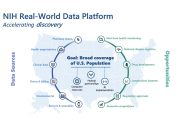
The Obama administration is touting the latest ObamaCare enrollment figures as evidence that the healthcare law is a success, but a closer look reveals that it isn’t nearly as successful as anticipated at the outset — and it may never be.
“As we approach the five-year anniversary of the Affordable Care Act, we continue to see signs that the act is working,” Meena Seshamani, director of the Department of Health and Human Services’ Office of Health Reform, told reporters March 16. “It means that 16.4 million people no longer need to put off care because they don’t have health coverage. The Affordable Care Act is an important part of the everyday lives of millions of Americans.”
That 16.4 million represents the number of previously uninsured Americans who have obtained coverage under ObamaCare as of February 15, the end of the latest regular open enrollment period.
That sounds like a major improvement over the pre-ObamaCare state of affairs, but consider this: When the Affordable Care Act (ACA) was passed in 2010, the Congressional Budget Office (CBO) projected that by 2015, there would be a net increase of 26 million individuals with health insurance (15 million through Medicaid plus 13 million through the exchanges minus 2 million who either lost or didn’t get health insurance because of the ACA). Thus, even if no one had lost coverage since 2010 — and we know millions have — ObamaCare would be performing well below expectations.
The CBO’s latest projections, which do take into account those who have lost coverage, say the ACA will result in a net increase of just 17 million insured people as of this year (10 million through Medicaid plus 11 million through the exchanges minus 4 million who would otherwise have private insurance but don’t). That comes to just 65 percent of the CBO’s original estimate — a significant shortfall.
Not all of this can be blamed on overly optimistic assumptions at the CBO. Who could have foreseen that the Supreme Court, while upholding the ACA’s individual mandate, would declare its Medicaid expansion nonbinding, leading 23 states to opt out? There would surely be many more insured people had all states expanded the program. After all, even with the lack of state participation, “the bulk of Obamacare’s net coverage gains are coming from dumping people into Medicaid (59 percent of the current projected net increase in 2015), not from getting people enrolled in private insurance (41 percent),” according to the Weekly Standard. And that’s with the government’s subsidizing 86 percent of private-insurance enrollees, something that could change drastically if the Supreme Court decides the law means what it says, namely that subsidies are only available on state, not federal, exchanges.
Another major factor in the ACA’s underwhelming performance is that people simply don’t like the plans available on the exchanges and would rather pay the penalty for not having coverage than shell out the bucks for expensive coverage that doesn’t meet their needs.
Many people weren’t aware of the penalty prior to this year’s tax-filing season. According to the Wall Street Journal, a survey conducted by McKinsey & Company’ s Center for U.S. Health System Reform just after the end of the 2015 enrollment period found that 41 percent of the uninsured didn’t know about the penalty. But that same survey discovered that awareness of the penalty didn’t make much difference: Just 12 percent of those same previously unaware uninsured said that being told of the penalty would induce them to enroll in coverage.
Why would so few buy insurance when they knew they were going to be fined for not having it? According to the survey, 57 percent of the uninsured said the penalty is less expensive for them than coverage. (Thirty-one percent said they didn’t need health insurance anyway, while 26 percent said they’d like to have it but prefer to pay the penalty because it’s cheaper.)
This does not bode well for the Obama administration’s special enrollment period lasting from March 15 to April 30. That period was meant to give people who’d paid the individual-mandate penalty for 2014 but hadn’t enrolled in coverage for 2015 another chance to enroll. The administration was hoping both to head off the public-relations nightmare of Americans’ discovering they were subject to the penalty after the 2015 enrollment period had ended and to boost the 2015 enrollment numbers. Now it appears that few people are taking advantage of the opportunity.
“Our analysis indicates that a significant percentage of taxpayers whose household members were not covered for at least a portion of 2014 are opting” not to buy coverage for 2015 and instead pay the penalty again, H&R Block vice president of healthcare enrollment Mark Ciaramitaro told the Journal.
The special enrollment period “was a good PR move and aligns enrollment with tax season, but we’re not seeing a massive rush,” Jackson Hewitt Tax Service spokesman Mark Steber told the paper. “It’s been pretty unremarkable.”
This is somewhat surprising given that the penalty is increasing significantly this year. For 2014, it was the higher of $95 or one percent of income. For 2015, it’s the higher of $325 or two percent of income — “though,” notes the Journal, “millions of people qualify for exemptions.”
One person who’s opting to pay the penalty is 59-year-old Navarre, Florida, resident Richard Gonzalez, a retired United Parcel Service employee. Gonzalez told the Journal it would cost him $400 a month for an exchange plan with a $6,000 deductible, while his penalty for not having coverage would be just $250.
“I think it’s wrong I have to pay the penalty,” said Gonzalez. “But it beats paying more than $10,000 a year.”
Of course, even those who do obtain exchange coverage may be in for a shock come tax time. Their subsidies are based on their estimated income at the time of enrollment. If their actual income varies from their estimate, they may see their tax refunds shrink or even owe money to the government. Furthermore, anyone who bought exchange coverage in 2014 and didn’t choose a new plan for 2015 was automatically re-enrolled in the same plan, with his subsidy based on his 2014 income projection, making it even more likely to be wrong this year — a problem that will persist and quite possibly get worse as long as subsidies continue to be based on individuals’ income estimates.
Then there are the exchange plans’ narrow provider networks, the websites’ technical glitches, and the Obama administration’s sending out hundreds of thousands of incorrect tax statements for 2014.
Add up all the negatives of ObamaCare, and it’s no wonder it isn’t living up to its backers’, or even the CBO’s, expectations. Worse still, even if ObamaCare meets the CBO’s current expectations, it will still leave 31 million people uninsured — up to seven million more than it will insure — and taxpayers, whether they are insured or not, will pay a $2 trillion penalty.




